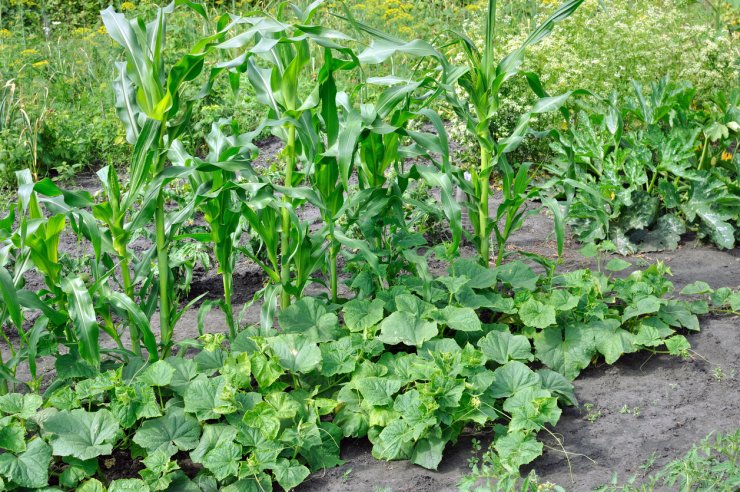
The Three Sisters method
If you’d like to honor ancient tradition in your garden, you might want to consider a Three Sisters garden: corn, beans, and pumpkin all together. This style of planting ensures that each plant can get what it needs from the soil; these three plants complement each other. This is commonly known as companion planting. There are also plants that do not get along well together, but that’s a story for another day.
The First Nations peoples of North, Central, and South America have long understood that some plants work better together. The Three Sisters garden mound has corn in the middle, pole beans around the corn, and pumpkins at the corners. The height of the corn supports the bean vines; the bean vines keep the corn stalks together for added stability. Beans fix nitrogen in the soil; surprise—corn and pumpkins are heavy nitrogen users. The broad leaves of the pumpkin vines deter weeds and conserve moisture. And the pumpkin vines with prickly stems deter predators. It’s a perfect “I’ve got your back” sort of planting.
If you decide to try the Three Sisters planting approach and you plant more than one mound, you’ll need to limit your pumpkin planting to just one mound and use only smaller varieties of pumpkin; the vines from the vigorous pumpkins could prove to be too much of a good thing for multiple plantings of corn and beans.
Check with your local extension center, garden center, or community garden for tips on the best types of corn, beans, and pumpkin to plant in your area.
Have you ever tried the Three Sisters method of planting for your garden? Please tell us how that worked out for you.


 Previous
Previous


I did try cucumber, corn and squash and I either planted the corn to late because they didn’t have time to mature. The cucumbers were to heavy and high winds broke some corn down.
I did not try legumes, but I did try corn with my pumpkins. Sorry, they died. Perhaps it was the variety, I cannot say.